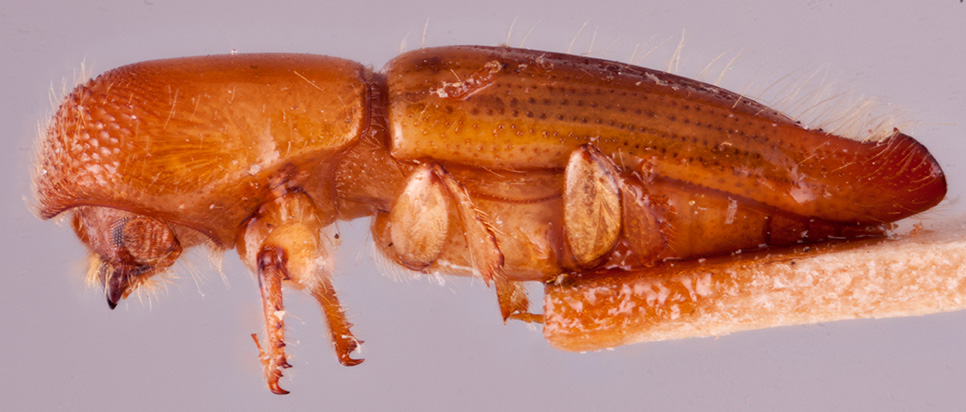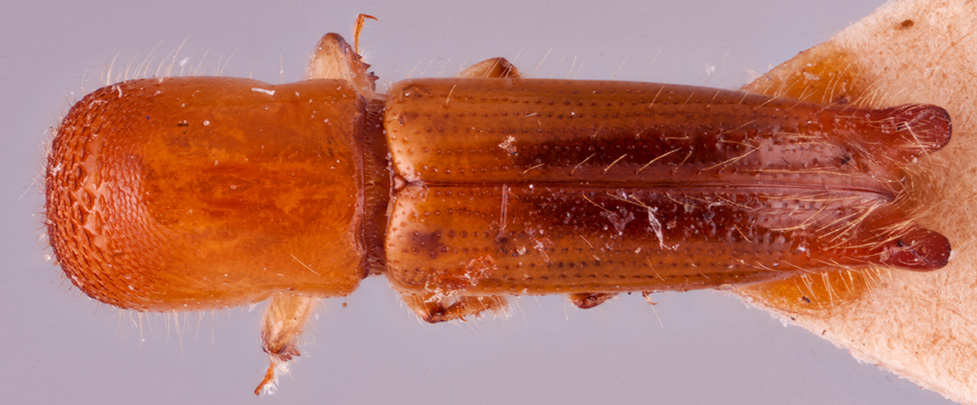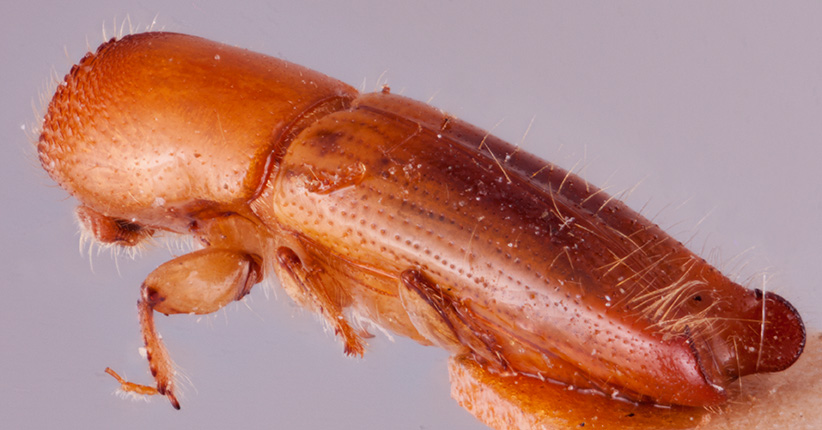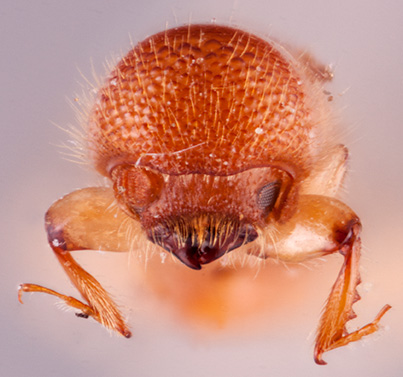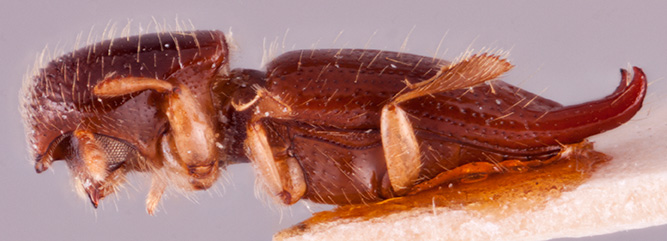Streptocranus
|
Streptocranus mirabilis; R.K. Osborn |
|
Streptocranus mirabilis; R.K. Osborn |
|
Streptocranus mirabilis; R.K. Osborn |
|
Streptocranus mirabilis; R.K. Osborn |
|
Streptocranus bicuspis; R.K. Osborn |
Taxonomy
Streptocranus Schedl, 1939b: 52.
Diagnosis
The most slender and extremely elongated species (1.90−4.90 mm long; 3.85−4.75 times as long as wide) occurring in Southeast Asia. Streptocranus can be distinguished by its unique subquadratesubquadrate:
almost quadrate, with oblique corners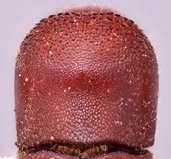 and laterally constricted pronotumpronotum:
and laterally constricted pronotumpronotum:
the dorsal surface of the thorax
; flat and long pronotalpronotal:
pertaining to the pronotum
discdisc:
the flat central upper surface of any body part (e.g. pronotum and elytra) ; elytral apexapex:
; elytral apexapex:
point or edge furthest from the body; opposite of base
 divaricate and ornamented with a pair of distaldistal:
divaricate and ornamented with a pair of distaldistal:
situated away from the body
projections; protibia slender, sickle-shaped; mycangial tufts absent; scutellumscutellum:
a shield-like sclerotized plate located at the midpoint of the elytral base
flat, flush with elytra; and procoxae contiguous.
May be confused with
Distribution
only occurring in the Paleotropics and Oceania
Gallery system
The gallery systems of Streptocranus seem to be rather variable, with a few branches that may run horizontally or longitudinally, and may be irregularly widened, but without distinct brood chambers (Browne 1961bBrowne 1961b:
Browne FG. 1961b. The biology of Malayan Scolytidae and Platypodidae. Malayan Forest Records 22: 1-255.).

